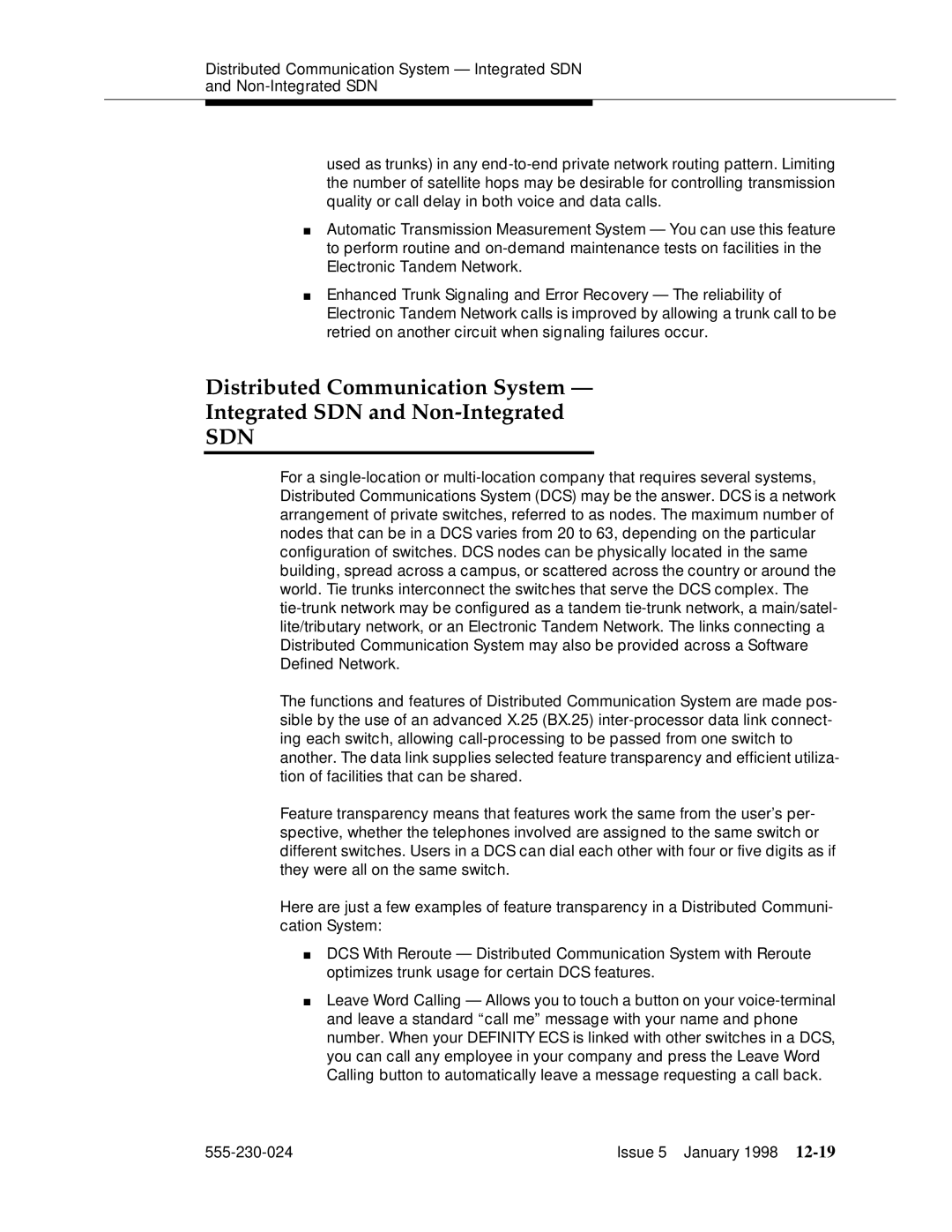
Distributed Communication System — Integrated SDN
and
used as trunks) in any
■Automatic Transmission Measurement System — You can use this feature to perform routine and
■Enhanced Trunk Signaling and Error Recovery — The reliability of Electronic Tandem Network calls is improved by allowing a trunk call to be retried on another circuit when signaling failures occur.
Distributed Communication System —
Integrated SDN and
SDN
For a
The functions and features of Distributed Communication System are made pos- sible by the use of an advanced X.25 (BX.25)
Feature transparency means that features work the same from the user’s per- spective, whether the telephones involved are assigned to the same switch or different switches. Users in a DCS can dial each other with four or five digits as if they were all on the same switch.
Here are just a few examples of feature transparency in a Distributed Communi- cation System:
■DCS With Reroute — Distributed Communication System with Reroute optimizes trunk usage for certain DCS features.
■Leave Word Calling — Allows you to touch a button on your
Issue 5 January 1998 |
